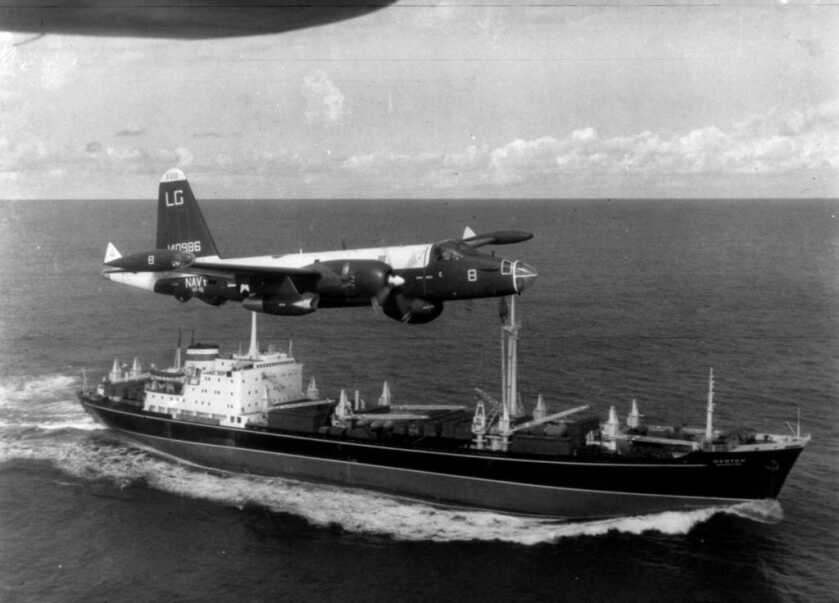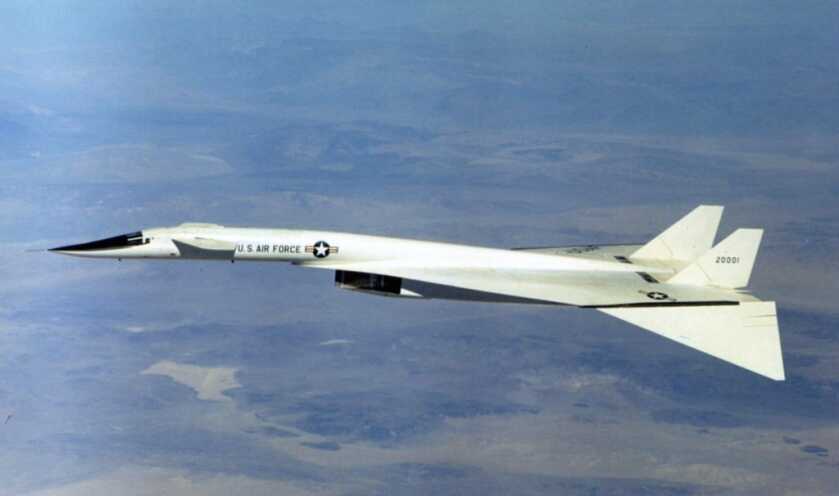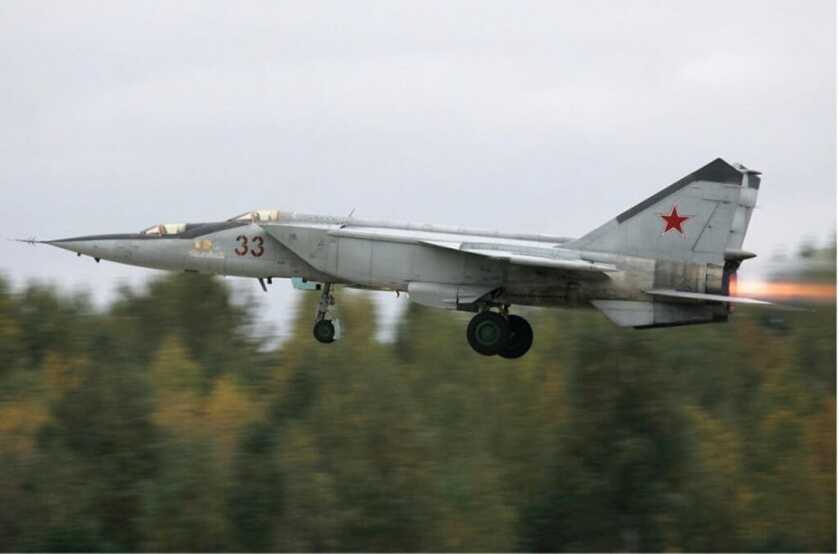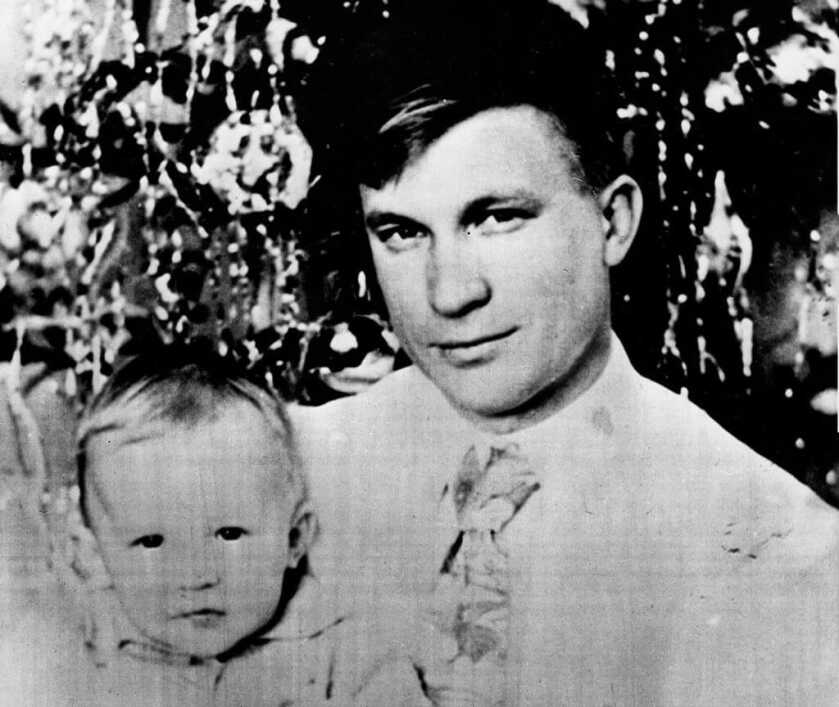
If you had every dollar America spent on defense from the end of WW2 to the end of the Cold War you could raze and rebuild every manmade structure in the United States. Spinoff technologies brought us such stuff as duct tape, GPS, digital photography, and many common feminine hygiene products (first improvised out of cellulose bandages by British and American Army nurses in World War 1).

The Cold War raged from 1947 until the fall of the Soviet Union on Christmas Day 1991. This protracted period of geopolitical tension was characterized by a tit-for-tat arms race that saw each side responding to advances of the other. Military Intelligence was and still remains an inexact science. Sometimes the various thrusts and parries resulted in truly astronomical monetary expenditures.

In few other areas did the arms race achieve more rarefied heights than in the competition over warplanes. Between 1903 and 1943 aviation technology went from the Wright Flier to the B-29 Superfortress. From 1943 until 1956 the state of the art advanced from the lumbering B-29 to the supersonic B-58 Hustler. With each advance in bomber technology came corresponding bounds in fighter tech to counter it. Then came the XB-70 Valkyrie.

The B-58 had a maximum speed of 1,319 mph (roughly Mach 2) and a service ceiling of 63,400 feet. By contrast, the XB-70 topped out at 2,020 mph (Mach 3.08) and could reach 74,000 feet. This put it out of reach of Soviet interceptors. For the Russians this was a world-class crisis.

Paranoia ruled the day. Loss of parity could result in a first strike weapon that would become an existential threat. When faced with a supersonic bomber of unprecedented capabilities, Soviet fighter designers got busy. The end result was the MiG-25 Foxbat.

Developed emergently by the Mikoyan-Gurevich design bureau using radical applications of existing technology, the MiG-25 was Russia’s answer to the XB-70 Valkyrie. First flown in 1964, the type saw its first operational deployment in 1970. On the surface, the MiG-25 was terrifying.

At 78 feet long the MiG-25 was an absolutely massive fighter plane. Additionally, its wings were enormous, intimating a highly maneuverable airframe. The two Turmansky R-15B-300 afterburning turbofan engines on the MiG-25 had originally been designed to power drones and were not intended to have a lengthy service life. The first examples were only good for about 150 hours between engine changes. The final package, however, was the fastest fighter interceptor ever created.
One Disgruntled Pilot Changes Everything

Viktor Belenko was born in Nalchik, Russia, on February 15, 1947. By his 29th birthday, LT Belenko was at the top of his game. He had a wife and a young son and was posted to Chuguyevka Air Base flying the most advanced fighter aircraft his nation fielded. LT Belenko was the poster child for 1970’s-era communism. Under the surface, however, all was not well with the Soviet Air Defense Force’s fair-haired boy.

The CIA and the USAF had an illustrious history of trying to coax communist pilots into defecting with their combat aircraft. Operation Moolah was an unsuccessful effort at bribing North Korean pilots to defect with a then-state of the art MiG-15. North Korean LT No Kum-Sok did land his MiG-15 at Kimpo Air Base in South Korea in 1953, but he had been unaware of the program.

Operation Fast Buck was a similar effort aimed at North Vietnamese pilots. Operation Diamond was an Israeli enterprise that did actually bag them an Iraqi MiG-21. In 1976, however, Belenko’s motivations were a bit closer to home.
Corruption in the System

Communism is based upon a few flawed premises. The most glaring is that Communists presume that people are innately good. Communism asserts that if left to their own devices human beings will sacrifice for the collective. By and large, that’s just not true.

The second orbits around propaganda. Totalitarian regimes must control the flow of information to survive. That goal gets ever more difficult in the Information Age, but Kim Jong Un stands in portly testimony that it can yet still be done.

There is a common thread in every communist sympathizer in the West. That is an assumption that the only reason that communism has failed to improve people’s lives every single time it has ever been attempted is that it was always just done wrong. The reality is that the communist leadership, like most government leaders, eventually evolve to believe that the rules do not apply to them. Vladimir Putin is a product of that defunct system, and he is currently worth some $70 billion.

LT Belenko’s wife Lyudmila had grown unhappy with military life and announced her intent to file for divorce and move back to her parents in Magadan with their three-year-old son. The infrastructure and support facilities at Belenko’s base were also badly lacking. Whenever Belenko would voice his concerns to his political officer he was derided for complaining. All these influences synergistically drove the young Soviet pilot to take some fairly drastic action.
The Event

On the morning of September 6, 1976, LT Belenko launched in his single-seat MiG-25P Foxbat on a training mission alongside several of his mates. When over open water Belenko claimed engine trouble and fell out of formation. He then dropped the massive fighter down to thirty meters and made a beeline for Japan.

Belenko’s maps were sketchy concerning Japanese airfields. His intended destination was a military field at Chitose. However, thick cloud cover, his crummy maps, and a critical lack of fuel drove him to a smaller civilian field at Hakodate.

Belenko circled the field three times, nearly colliding with a civilian Boeing 727 on climb out. The runway was markedly shorter than what the MiG-25 typically required. Despite deploying his drogue chute and standing on his brakes hard enough to blow out the front tire the heavy fighter still overran the runway by 240 meters. Belenko shut down his engines with thirty seconds of fuel remaining. When civilians began to gather around the plane and take pictures Belenko dissuaded them by firing his pistol into the air.
The Gun

LT Belenko almost assuredly packed a Makarov service pistol when he landed in Japan. This compact little handgun is called the PM in Russian parlance. PM stands for Pistolét Makárova or “Makarov’s Pistol.” The PM is a fairly uninspired unlocked blowback handgun designed by Nikolay Fyodorovich Makarov and first adopted in 1951. The PM fires the stubby little 9x18mm Makarov cartridge.

The PM feeds from an 8-round single-stack box magazine retained via a heel-mounted catch. The overall layout and function of the gun strongly favor that of the Walther PPK. Unlike the PPK, the slide-mounted safety is pressed up for safe and down for fire. More than five million copies have been produced.
The Rest of the Story

Belenko was arrested by Japanese police upon his exit from his warplane. He immediately requested asylum in the United States. The Soviets for their part announced that Belenko had gotten lost and had subsequently been drugged by the Japanese. When granted an interview with the young pilot, Russian officials were predictably unable to persuade him to return home.

American and Japanese aviation experts tore Belenko’s MiG apart to learn its secrets only to find that it was a pretty lousy airplane. The Soviets had not yet perfected the capacity to work with titanium for high-temperature applications, so much of the plane was actually formed from stainless steel. This made the aircraft incredibly heavy with a max gross weight of 80,954 pounds. Additionally, the big wings were not designed to enhance maneuverability. The MiG-25 needed these large wings simply to stay aloft given its portly weight. The Russians eventually got their plane back…in forty different boxes after Western intelligence personnel had picked it literally to pieces.

George Bush was director of the CIA at the time and declared the defection of LT Belenko to be an “intelligence bonanza.” In 1980 the US Congress passed S.2961, a specific act that granted LT Belenko citizenship in the United States. Jimmy Carter signed the act into law on October 14 of that year.

Viktor Belenko married a music teacher from North Dakota and fathered two sons. They later divorced. Belenko never divorced his first wife, though he did visit Moscow once on business in 1995 after the fall of the Iron Curtain. The Soviets alternately claimed that Belenko had been killed in a car wreck, repatriated to Russia to be arrested and executed, or otherwise brought to justice. In reality, Belenko served as a consultant to the US government and an aerospace engineer. By all accounts, he still loves it here.

Belenko seldom grants interviews, but he purportedly said this in 2000 during a conversation in a bar, “Americans have tolerance regarding other people’s opinion. In certain cultures, if you do not accept the mainstream, you would be booted out or might disappear. Here we have people — you know who hug trees, and people who want to cut them down — and they live side by side!”

Belenko said he once ate a can of American cat food by mistake. He later claimed, “It was delicious. Better than canned food in the Soviet Union today!”

The XB-70 that drove the whole MiG-25 project was a big nothing burger. Only two prototypes ever flew, one of which was destroyed in a horrible accident. You can see the video of the event here.

The subsequent B1 Lancer was actually designed for low altitude deep penetration missions for which the MiG-25 was utterly unsuited. Spoofing the Soviets into building what was at the time one of the most expensive and strategically worthless warplanes in history yet remains one of the greatest Western intelligence coups of the Cold War.

I read Viktor Belenko’s autobiography MiG Pilot: The Final Escape of Lieutenant Belenko back in the 1980s and loved it.




I was flying F-4’s when Belenko defected. It was a big deal.
The Japanese initially were doing the disassembly and exploitation of the a/c, keeping the Americans away. When they found a bomb in the radar, they asked for our help. The radar was analog built of mini-tubes.
The Air Force made a thick manual for the MIG-25 from the exploitation of the a/c. When we gave the a/c back to the Russians, it was in crates. The remaining fuel was returned to the Russians in quart jars.
They also made a video of a long conversation with an AF major who became Belenko’s baby sitter after the Air Force got a hold of him after 18 months with the CIA. Belenko couldn’t speak English when he defected; by the time the AF got him, he could. The major had some fascinating incites gained from conversations with him, that usually occurred in bars in airports on the way somewhere.
Hi Dr. Dabbs, I really enjoy reading your articles. However, with this one there is a mistake (the very beginning) in that the U.S.S.R died in 1991, not 1989.
Shawn, I had to research that. Apparently there is some controversy regarding definitions, but I think your date is better than mine. I made the change. Thanks for the observation.
If I may interject a clue to the history:
“The XB-70 that drove the whole MiG-25 project was a big nothing burger.”
It was the Government Accounting Office that cooked the burger. They didn’t like the investment and cancelled one system after another on the bird until there wasn’t much left. First to go were the weapon systems: WHAM! suddenly dozens of engineers were out on the street. It was a miracle even two shipsets were completed, given that like many other well-intentioned projects that wind up cancelled by the government, North American had the fortitude to see the project through at a loss.
Thanks for the great article. I was serving in S Korea, 2nf Infantry Division, when Belenko defected I remember what a big deal it was.
As far as the Makarov being uninspired maybe you are right, but what I do know is that through thousands of rounds my 1963 E German Mak has never failed to go bang. Puts rounds on rounds on target quite accuratey too.
“Viktor Belenko’s autobiography, “MiG Pilot: The Final Escape of Lieutenant Belenko”, is written with assistance of an American writer, John Barron.
Wasn’t Donald Trump’s alias, John Barron? Did Trump just help Belenko write the book, or was Trump involved in stealing the MiG? Did Belenko introduce Trump to Putin? If the Democrats see this, Katy, bar the door.
And what does Viktor Belenko think of America now?
He’s flying MIGCAP for Putin in Crimea. 😉
Excellent article! I read MIG Pilot as a young teen in the 1980s and loved it. It even inspired me to write my high school physics paper on thr MIG-25 (somehow i convinced my teacher that aeronautics = physics = MIG-25). Thanks for reaching into the archives of your mind to share this history with others.
“So much stupid in such a tight enclosed space.”…
I’m constantly reminded of that same sentiment every single time I see the current “Resident” and his cadre of gaffe-refuting, diaper-changing, enablers. The communist-inspired farce labeled “The January 6 Commission” also evokes the same to a freaking “T”… there’s an incalculable amount of stupid in both of those tight spaces!
Thanks, Will, for another fantastic article of forgotten history. What struck me was the idea that the CIA actually used to work for our country and not the commies.